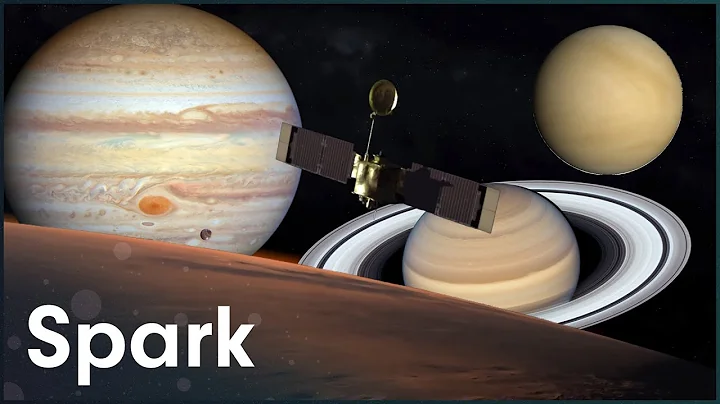The first cosmic speed is 7.9 kilometers per second. It has another name, which is "circulation speed".
As the name suggests, as long as an object has an initial speed of 7.9 kilometers per second, it can become a satellite of the earth and orbit the earth without falling. But don’t think that every artificial earth satellite we launch is launched at this speed. The concept of the first cosmic velocity first originated from a hypothesis of Newton . This hypothesis goes like this: If a cannonball is fired in the horizontal direction on the earth, if the speed of the cannonball is fast enough, then it will orbit the earth. And never fall to the ground. This hypothesis is called "Newton's Cannon", and there is an essential difference between cannonballs and rockets. Cannonballs have no subsequent power, so they can only enter the earth orbit if they have a fast enough initial speed. The

rocket uses the reaction force generated by ejecting material backwards to propel itself forward. So theoretically, if a rocket has a steady stream of power, it will eventually be able to enter the earth's orbit no matter how slowly it flies.
Of course, this is just a theory. In reality, because rockets are chemically powered, the fuel already accounts for most of the weight of the rocket, so it is still necessary to increase the speed as much as possible to send the spacecraft into the sky. So how is the first cosmic velocity calculated? How fast does a rocket need to be in reality? When an artificial satellite orbits the earth, it is actually performing a centripetal motion, and the centripetal force supporting this centripetal motion is actually gravity. In this case, we can list the expression of the centripetal force, namely: G =m(V∧2/R).

G=M(V∧2/R), where G is the centripetal force, which is the universal gravitational constant, m is the mass of the artificial satellite, and R is the radius of the earth.
Compared with the earth, the mass of artificial satellites is very small and basically negligible. Therefore, according to this formula, the speed V can be calculated to be 7.9km/s, which is the first cosmic speed. The first cosmic speed is relative to the center of the earth, and the earth itself has a rotation. Therefore, when launching a spacecraft, the rotation speed of the earth can be used, which can save more effort. As a sphere, the earth has different linear rotation speeds at different locations. The equatorial region is the fastest, with a linear rotation speed of about 460m/s. This means that launching a rocket in the equatorial region only needs to reach a speed of 7.4km/s.

Because launching rockets in the equatorial region can maximize the leverage, many countries in the world will choose to build launch bases close to the equator, such as my country's Hainan Wenchang Launch Base, and the launch speed of my country's Long March series rockets is 7.5km /s or so.
can orbit the earth when it reaches the first cosmic speed. What if it exceeds the first cosmic speed? If the speed of an object is exactly equal to the first cosmic speed, then theoretically it will orbit the earth in a nearly circular orbit. When the speed of the object exceeds the first cosmic speed, its orbit will tend to is an ellipse, and the faster the speed, the more elliptical the ellipse becomes. If the object's motion speed reaches a threshold, then it can completely escape the gravitational constraints of the earth. This threshold is the second cosmic speed .

Once the moving speed of an object reaches the second cosmic speed, it can break away from the earth, so the second cosmic speed is also called the "detachment speed".
What is the speed of the second universe? The derivation of the second cosmic velocity is a little more complicated. We omit this process and give the formula directly, namely V=√2GM/R. G in this formula is still the universal gravitational constant, M is the mass of the earth, and R is the radius of the earth. After some calculation, we can get the result of V=11.2km/s, which is the second cosmic velocity.If an object reaches the first cosmic speed, it can become a satellite of the earth. If it reaches the second cosmic speed, it can become a planet orbiting the sun. So what if you want to break out of the solar system? Of course it works, this requires reaching the third cosmic speed of , .

The derivation process of the third universe velocity is more complicated. We still give the formula directly, that is, V=√2V (ground).
The 2V (ground) in this formula represents the Earth's revolution speed around the sun, which is about 30 kilometers per second. This formula is calculated using the sun as the reference system, and the third cosmic speed we call is based on the earth as the reference system, so we must also subtract the revolution speed of the earth itself, so the formula becomes V=(√2-1)V (ground), the result obtained is 16.7km/s, which is the third cosmic speed. The solar system is just an ordinary star system in the universe. There are many larger cosmic structures besides this. Therefore, in addition to the third cosmic speed, there are also fourth, fifth, etc. cosmic speeds. However, based on our current ’s power cannot yet be calculated because we simply cannot determine the mass of larger cosmic structures.







![Converting m/s to km/h [EASY] - DayDayNews](https://i.ytimg.com/vi/wFV3ycTIfn0/hq720.jpg?sqp=-oaymwEcCNAFEJQDSFXyq4qpAw4IARUAAIhCGAFwAcABBg==&rs=AOn4CLD-u_BrMzRCEbG7l8jntd_qthqdbQ)













